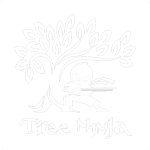
Tree Pruning
Tree pruning services - Adelaide
We are qualified arborists who are dedicated to your satisfaction, the health and safety of your trees and have a desire to work with you to ensure you are getting what your property needs.
We will listen to what you need, provide advice, and deliver the highest standards of pruning to your trees.
All pruning we do complies with Australian Standards (AS4373).
Enjoy this tree pruning time-lapse video
- Dead-wooding
- Tree shaping and balancing
- Removal of compromised branches
- Maintenance pruning
- <30% reduction pruning
- Removal of limbs near powerlines, wires, roofs, gutters, etcx
- Removal of epicormic growth
All care is taken to safely prune your trees, and to care for your trees. Every effort is made to protect your trees by using the latest equipment to ensure best practices.
We pride ourselves in our ability to restore health to your trees.
Tree Ninja uses a variety of different methods in tree maintenance, including cutting overweight branches, trimming excess leaves, shaping the canopy and encouraging healthy growth. Trees will often become unbalanced through excess weight on their limbs, making them more susceptible to falling down or being blown over in a storm.
The best way to prevent your tree becoming dangerous is to have a qualified arborist perform health assessments and pruning before they deteriorate in health.
Why tree maintenance is important
Trees are a considerable investment, adding to the value of your home. This means it’s important to look after them and keep them looking their best, ensuring long life and promoting good health for the tree. Pruning trees allows light and air to penetrate to lower branches, enhancing growth.
Large trees can be carefully pruned to clear the vegetation away from power lines and other structures. Larger significant trees may require an Arborist Report to be submitted to the council for approval to prune more than 30%.
There are a wide variety of tree pruning options available:
FORMATIVE PRUNING – The aim of formative tree pruning is to generally enhance younger tree’s form and improve their structure, it can also be to reduce the development of structural weaknesses and to decrease intrusion on buildings and/or other objects as they grow.
REMEDIAL (RESTORATIVE) PRUNING – This type of tree pruning is only carried out on a tree which has lost its natural form and structure. The purpose of this pruning is to prolong the life expectancy of the tree and to reduce any potential hazard. This type of pruning removes damaged or diseased branches
DEADWOOD REMOVAL – Dead wooding is the removal of dead branches within the crown of the tree.
CANOPY LIFTING – Canopy lifting is a practice of removing branches from the bottom of the crown of a tree to provide clearance for pedestrians, vehicles and buildings. Also canopy lifts are used to reduce the risk of (slf) sudden limb failure. This technique is also more beneficial to the overall health of the tree.
CANOPY REDUCTION – Canopy reduction is most often used when a tree has grown too large for its permitted space. We have a method of pruning where we can keep the trees natural appearance and a specialised pruning to minimise the stress on the tree and increase the time before pruning is needed again.
FRUIT TREE PRUNING – Fruit trees are pruned to control growth, remove dead or diseased wood and to encourage the formation of flowers and fruit buds, leading to a heavier crop. Pruning of fruit trees is best carried out mid to late winter. A new fruit tree should be pruned and trained early to ensure their productivity and longevity and to prevent later injury from weak limb structure.
PALM TREE PRUNING – There are many different species of palm trees, palms that drop dead fronds and fruit are potentially hazardous to people walking underneath, they also cause a lot of mess with build up of debris on the ground. Palm trees that retain dead fronds and fruit for some time can be quite unsightly. We can climb any type of palm tree and remove dead fronds and fruit to leave the palm tree looking more attractive. We can also shave date palms to create a striking smooth stem.
STORM DAMAGE – Pruning your trees is a must, by removing dead, diseased, damaged and structural flaws; you are making your tree stronger to uphold high winds. Dead trees are extremely dangerous and can do a lot of damage, if you are unsure of the health of your tree.